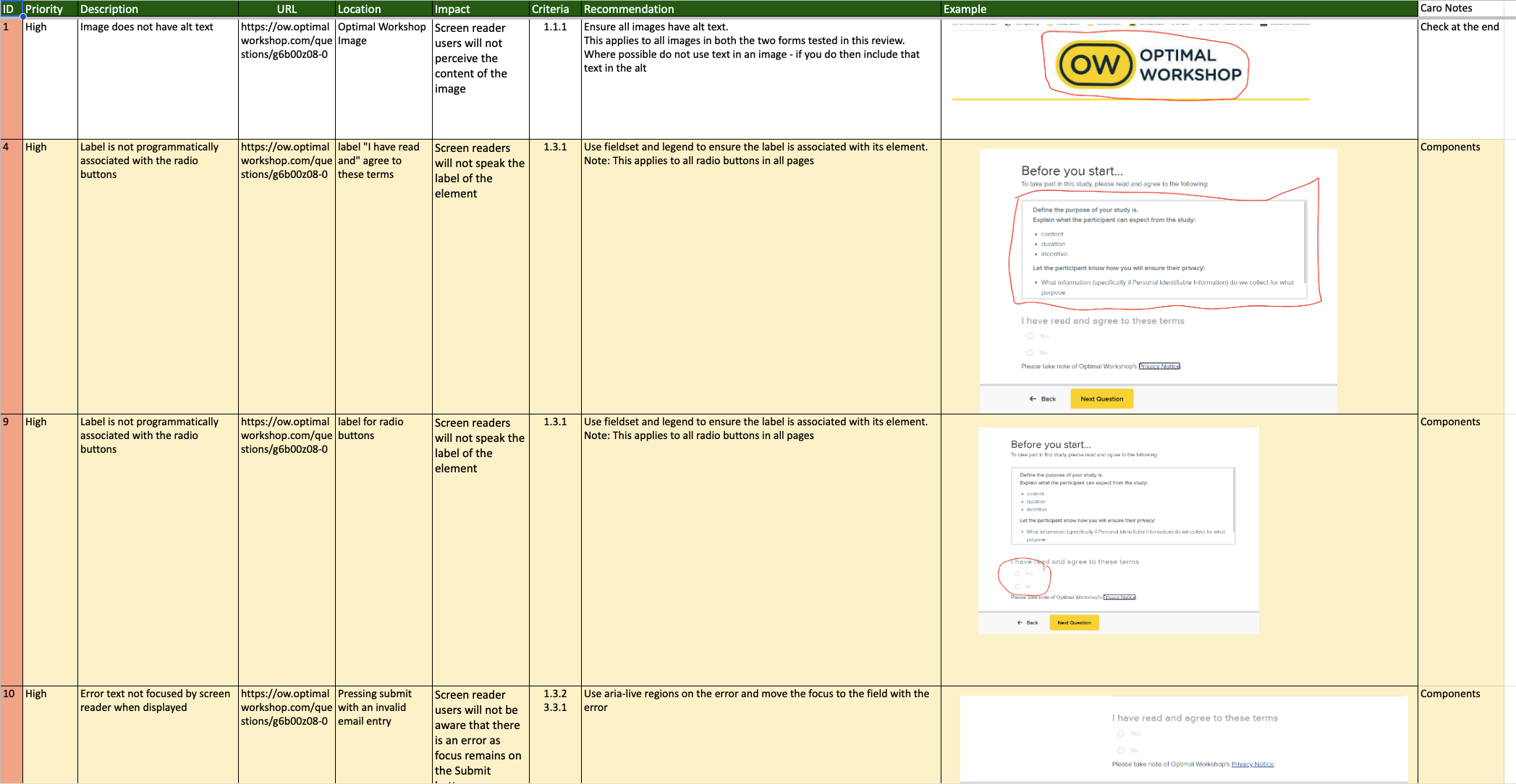Research & Discovery
Accessibility Audit & Consulting Partnership
Recognizing that our internal team needed specialized expertise, we initiated a partnership with accessibility consultants to conduct a thorough WCAG 2.1 compliance audit. Our team participated actively in user testing sessions and expert evaluations to understand the real impact of our accessibility gaps.
Through our collaborative research, we uncovered several critical insights that shaped our approach:
- We confirmed that our in-house accessibility knowledge needed to be supplemented with external expertise for the level of improvements we wanted to achieve
- Our team discovered that visual designs could appear perfectly functional but completely fail accessibility standards when implemented
- We determined together that taking a component-level approach would be the most scalable way to create organization-wide impact
- Our audit revealed critical issues that required immediate team attention to achieve AA compliance
The specific pain points we documented included poor keyboard navigation, missing ARIA labels, inadequate color contrast, and completely inaccessible form controls—issues that were creating real barriers for users with disabilities.
Scope Definition & Strategic Focus
Rather than trying to tackle everything at once, our team made the strategic decision to focus on Questions, our survey tool, as it was our most-used product.
Our thinking was that by demonstrating successful accessibility improvements here, we could establish proven processes and build organizational confidence for broader application across our entire product suite.
Research Resources & Best Practices
Our team immersed ourselves in established accessibility resources, drawing heavily from the UK Government Design System and W3C Accessibility Pattern Library. This collaborative research informed our approach and ensured we were building on proven best practices rather than inventing solutions from scratch.

.png)
.png)
.png)
.png)